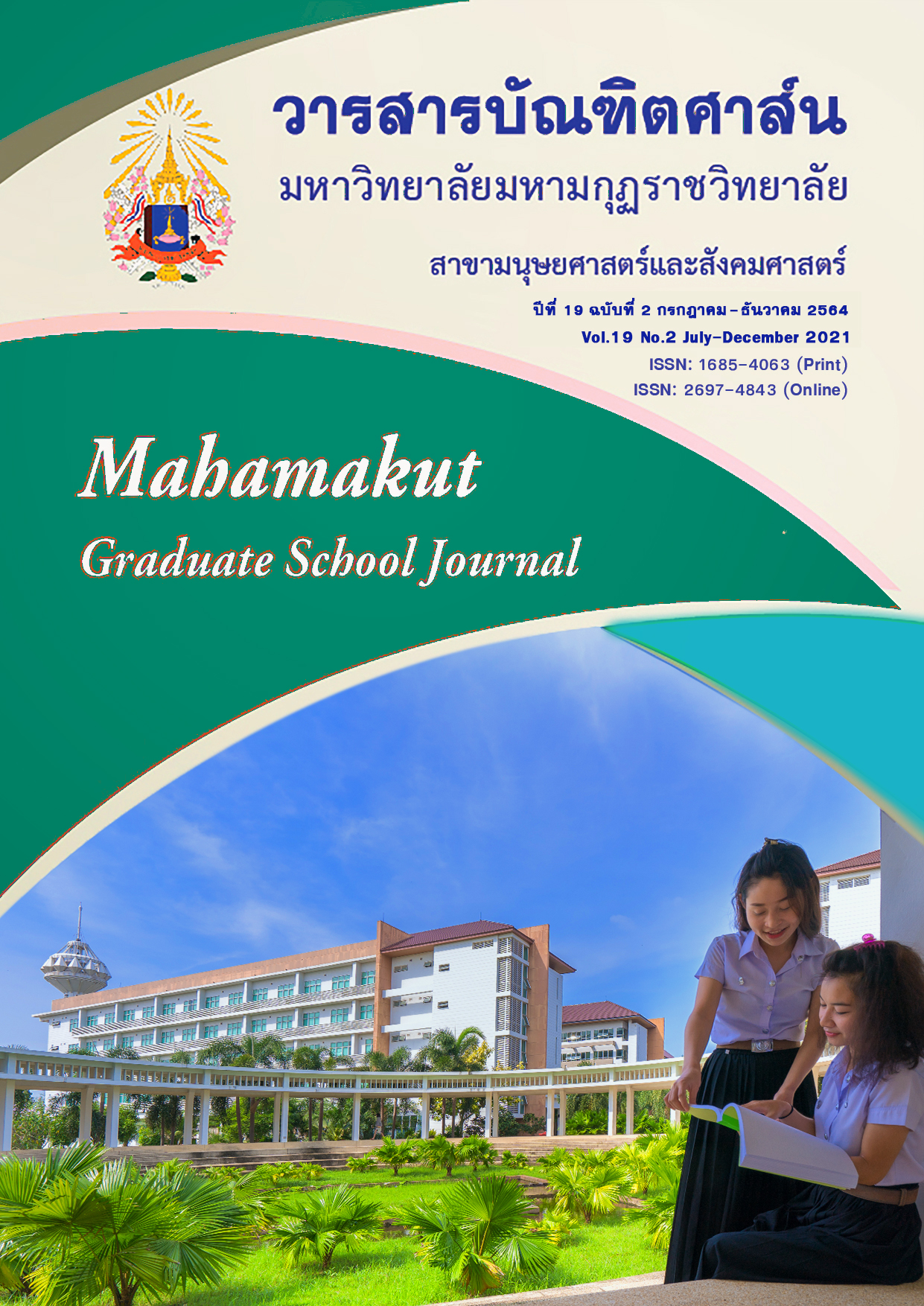พันธุ์ข้าวพื้นถิ่นทุ่งกุลาร้องไห้: ภูมิปัญญาการผลติและแปรรูปเป็นผลิตภัณฑ์เชิงพาณิชย์ของชุมชนและ การสร้างระบบข้อมูลทางภูมิศาสตร์ของแหล่งกำเนิด จังหวัดร้อยเอ็ด
คำสำคัญ:
พันธุ์ข้าวพื้นถิ่น, ทุ่งกุลาร้องไห้, ข้อมูลทางภูมิศาสตร์บทคัดย่อ
การวิจัยในครั้งนี้เพื่อ 1) เพื่อศึกษาความเป็นมาและสภาพปัจจุบันปัญหาภูมิปัญญาการผลิตพันธุ์ข้าวพื้นถิ่นในเขตทุ่งกุลา ร้องไห้ 2) เพื่อสร้างระบบข้อมูลทางภูมิศาสตร์ของแหล่งกำเนิดพันธุ์ข้าวพื้นถิ่นทุ่งกุลาร้องไห้ 3) เพื่อพัฒนารูปแบบการแปรรูปพันธุ์ข้าว พื้นถิ่นทุ่งกุลาร้องไห้เป็นผลิตภัณฑ์เชิงพาณิชย์ของชุมชน พื้นที่ในการวิจัยใช้เขตทุ่งกุลาร้องไห้ในจังหวัดร้อยเอ็ด 5 อำเภอ คือ อำเภอปทุมรัตต์ อำเภอเกษตรวิสัย อำเภอสุวรรณภูมิ อำเภอโพนทราย อำเภอหนองฮีกลุ่มผู้ให้ข้อมูล ได้แก่ นักวิชาการ เกษตรกร ปราชญ์ ชาวบ้าน ประชาชน ผู้ค้าข้าว ผู้บริโภคข้าวทั่วไปในจังหวัดร้อยเอ็ด จำนวน 80 คน ประกอบด้วย กลุ่มผู้รู้ จำนวน 20 คน กลุ่มผู้้ปฏิบัติ จำนวน 30 คน และกลุ่มทั่วไป จำนวน 30 คน เครื่องมือที่ใช้ในการวิจัยได้แก่ แบบสำรวจ แบบสังเกต แบบสัมภาษณ์ และแบบบันทึก การสนทนากลุ่ม เครื่องสมาร์ทโฟน อุปกรณ์ GPS เครื่องบันทึกเสียง ทำการเก็บรวบรวมข้อมูลทั้งภาคเอกสารและภาคสนาม โดยใช้รูปแบบวิจัยเชิงคุณภาพทางวัฒนธรรม นำข้อมูลที่ได้มาตรวจสอบความถูกต้องแล้ววิเคราะห์ข้อมูล ตามวัตถุประสงค์ที่ตั้งไว้ และนำเสนอผลการวิจัยด้วยวิธีพรรณนาวิเคราะห์
ผลการวิจัยพบว่า
- ข้าวพันธุ์พื้นถิ่นในเขตทุ่งกุลาร้องไห้ที่มีการผลิต อาทิ ข้าวเล้าแตก ข้าวก่ำใบเขียว ข้าวขาวโนนทอง ข้าวหอมลุงดา ข้าวป้อง แอ้วข้าวเหนียวแม่ฮ้าง ข้าวก่ำเกี้ยง ข้าวจ้าวหอมดง ข้าวเหนียวปลาเข็ง ข้าวลืมผัว ข้าวเหนี่ยวดำ ข้าวเหนียวแดง ข้าวพญาลืมแกง ข้าวผะเหวดเตี้ยฯ ในอดีตชาวนาจะมีการผลิตข้าวพันธุ์พื้นถิ่นที่แตกต่างกันตามสภาพของนาที่รับน้าฝน มีการใช้แรงงานจากคนและควาย เป็นหลักทำนาพอให้ได้ข้าวเก็บไว้กินเป็นหลักไม่ค่อยมีการลงทุนมากนัก ส่วนพันธุ์ข้าวจะมีเก็บไว้เอง หรือขอมากับเพื่อนบ้าน การทำนา จะทำตามความเชื่อ ตามบรรพบุรุษ ตามประเพณีลองผิดลองถูกโดยใช้ภูมิปัญญาแบบดั้งเดิมการเลือกพันธุ์ข้าวมีสองลักษณะคือ ข้าวหนักและข้าวเบา เพื่อให้เหมาะสมกับที่นาของตนเอง เพื่อให้ได้ผลผลิตสูงในสภาพปัจจุบันสังคมมีการเปลี่ยนแปลงไปโดยชาวนาส่วน ใหญ่เป็นผู้มีภูมิรู้้มิได้ผลิตไว้กินเท่านั้นแต่จะมีการผลิตเพื่อจัดจำหน่ายเป็นหลักจึงมีการใช้แรงงานจากเครื่องจักรกลเข้ามาช่วยและมีการศึกษาวิธีการและช่องทางการทำเกษตรสมัยใหม่จึงนิยมปลูกข้าวพันธุ์ที่มีความต้องการของตลาดและขายได้มีราคาสูง มีการจัดตั้งเป็นกลุ่มเกษตรกรอินทรีย์ เกษตรกรนาข้าวแปลงใหญ่มีการพัฒนาสายพันธุ์พื้นถิ่นที่ทนทานและให้ผลผลิตสูง ผลผลิตนำมาต่อยอดและพัฒนาเป็นสินค้าที่มีมูลค่า ซึ่งพันธุ์พื้นถิ่นที่ยังมีปลูก อาทิ ข้าวมะลิ ข้าวหอมนิล ข้าวลืมผัว ข้าวเหนียวเขี้ยวงู ข้าวนางนวล ข้าวหอมอ้ม
2 . พิกัดทางภูมิศาสตร์ของแหล่งกำเนิดพันธุ์ข้าวพื้นถิ่นทุ่งกุลาร้องไห้ ได้ดำเนินการสร้างด้วยวิธีการอ้างอิงบอกตำแหน่งเป็นค่าระยะเชิงมุมของละติจูดและลองจิจูดตามระยะเชิงมุมที่ห่างจากศูนย์กำเนิดของละติจูดและลองจิจูดที่กำหนดขึ้นสำหรับศูนย์กำเนิดของ ละติจูด พบว่า อำเภอปทุมรัตต์ มีพิกัดละติจูด/ลองจิจูด : 15°42'19.5"N/103°21'54.0"E., ละติจูด/ลองจิจูด : 15°42'24"N/103°21'11"E. อำเภอเกษตรวิสัย มีพิกัดละติจูด/ลองจิจูด : 15°32'20.2"N/103°32'54.9"E.,พิกัดละติจูด/ลองจิจูด : 15°33'03"N/103°34'16"E. อำเภอสุวรรณภูมิมีพิกัดละติจูด/ลองจิจูด : 15°43'26.5"N/103°47'44.1"E., พิกัดละติจูด /ลองจิจูด : 15°39'59.0"N /103°40'56.8"E. อำเภอโพนทราย มีพิกัดละติจูด/ลองจิจูด : 15°26'25"N/103°58'24.3"E.,พิกัดละติจูด/ลองจิจูด : 15°26'25"N/103°58'24.3"E. อำเภอหนองฮีมีพิกัดละติจูด/ลองจิจูด : 15°36'48"N/103°59'50"E., พิกัดละติจูด/ลองจิจูด : 15°34'37"N/104°01'38"E., และพิกัดละติจูด/ลองจิจูด : 15°33'00"N/103°57'29"E. 3. รูปแบบการแปรรูปพันธุ์ข้าวพื้นถิ่นทุ่งกุลาร้องไห้ เป็นผลิตภัณฑ์เชิงพาณิชย์ของชุมชน โดยเริ่มแรกมีวิธีการรวมกลุ่มกันของ เกษตรกรเพื่อให้มีจำนวนมากพอ สำหรับขายได้อย่างต่อเนื่องมีวิธีการจดเป็นวิสาหกิจชุมชนและเป็นกลุ่มเกษตรอินทรีย์ จากนั้นนำข้าว พื้นถิ่นมาแปรรูปในรูปแบบต่าง ๆ เพื่อเป็นผลิตภัณฑ์เชิงพาณิชย์ อาทิ แป้งประกอบอาหารที่ทำจากข้าวหอมมะลิ แป้งข้าวหอมนิล แป้ง ข้าวเหนียวลืมผัว แป้งข้าวไรซ์เบอรี่ เยลลี่น้านมข้าว ขนมวาวี่จากข้าวหอมมะลิเครื่องดื่มจากใบข้าวหอมมะลิต้นอ่อนที่ปลูกในท้องถิ่น อาหารจากธัญพืชข้าวหอมมะลิ ซุปครีมข้าวหอมมะลิสำหรับผู้สูงอายุ แป้งเค้กกึ่งสำเร็จรูปทำจาก ข้าวหอมมะลิ ผงนมข้าวสำหรับชงดื่ม ขนมไรซ์แครกเกอร์ครีมเทียมข้าวหอมมะลิขนมวอฟเฟิลกรอบ ขนมกลีบลำดวน เค้กเนยสด คุ้กกี้ ซิฟฟอนเนยสด ทำจากแป้งข้าวหอมมะลิ
เอกสารอ้างอิง
กรมการข้าว. (2556). คู่มือชาวนา “การผลิตข้าวอินทรีย์”. พิษณุโลก: ศูนย์วิจัยข้าว พิษณุโลก.
กรมการข้าว. (2560). คู่มือพันธุ์และลักษณะประจำพันธุ์ ข้าว. พิษณุโลก: ศูนย์วิจัยข้าวพิษณุโลก.
กรมการข้าว. (2561). การเลือกซื้อข้าวและผลิตภัณฑ์. พิษณุโลก: ศูนย์วิจัยข้าว พิษณุโลก.
กรกฎ สระคูพันธ์ และศุภวัฒนากร วงศ์ธนวสุ. (2562). การศึกษาการบริหารจัดการวิสาหกิจชุมชนกลุ่มแปรรูปแป้ง จาก
ข้าวหอมมะลิ : กรณีศึกษาจังหวัดร้อยเอ็ด. วารสาร บัณฑิตศึกษามหาวิทยาลัยราชภัฏสกลนคร. 16 (74). 77-81.
จิตติมา ผลเสวก. (2546). ข้าวพื้นบ้าน: เชื้อพันธุ์แผ่นดิน อีสาน. กรุงเทพฯ: อมรินทร์บุ๊คเซ็นเตอร์.
จันทร์จิรา รุ่งเจริญ. (2560). การปลูกข้าว. วารสาร สถาบันวิจัยและพัฒนาพื้นที่สูง (สวพส). 10(2), 80-91
บุบผา สารรัตน์. (2553). ข้าวที่ทรงคุณค่าแก่การอนุรักษ์. ศูนย์ทางด่วนข้อมูลการเกษตร (รักบ้านเกิด). อุบลราชธานี
ภารดี ยโสธรศรีกุล. วิถีไทย วิถีชีวิต วิถีข้าวและวิถีอีสาน : ข้าวและชีวิตของชาวนาไทยจากจังหวัดมหาสารคาม. วารสาร
บริหารธุรกิจและการบัญชี มหาวิทยาลัยขอนแก่น. 1(3),47- 52.
พนิต บรรณสาร. (2557). ปัจจัยที่มีผลต่อการยอมรับการ ปลูกข้าวด้วยวิธีโยนกล้าของเกษตรกรในอำเภอเมือง
จังหวัดกำแพงเพชร. (ปริญญาวิทยาศาสตรมหาบัณฑิต). เชียงใหม่: มหาวิทยาลัยเชียงใหม่.
พระปลัดอนันต์ สนพะเนาว์. (2559). วัฒนธรรมข้าว: การ สืบสานภูมิปัญญาพื้นบ้านด้านความเชื่อประเพณี และ
พิธีกรรมของชุมชนอีสานใต้. (ปริญญาปรัชญาดุษฎี บัณฑิต). มหาสารคาม: มหาวิทยาลัยมหาสารคาม.
พิกุล พงษ์กลาง. (2560). การวิจัยปฏิบัติการแบบมีส่วน ร่วมเพื่อเสริมสร้างความเข้มแข็งในการบริหารต้นทุนการ ผลิต
ของการปลูกข้าว กลุ่มวิสาหกิจชุมชนศูนย์เมล็ดพันธุ์ ข้าว ตำบลออนใต้ อำเภอสันกำแพง จังหวัดเชียงใหม่.
เชียงใหม่: มหาวิทยาลัยพายัพ.
ภารดี ยโสธรศรีกุล. วิถีไทย วิถีชีวิต วิถีข้าวและวิถีอีสาน : ข้าวและชีวิตของชาวนาไทยจากจังหวัดมหาสารคาม. วารสาร
บริหารธุรกิจและการบัญชี มหาวิทยาลัยขอนแก่น. 1(3),47- 52.
วงศ์พัฒนา ศรีประเสร็จ. (2558). การจัดการวางแผน การตลาดเชิงกลยุทธ์ธุรกิจแปรรูปผลิตภัณฑ์ข้าวกล้อง อินทรีย์ของ
กลุ่มผู้ผลิตในชุมชนบ้านมะค่า ตำบลมะค่า อำเภอกันทรวิชัย จังหวัดมหาสารคาม. วารสารมหาวิทยาลัย ราช
ภัฎสกลนคร. 7 (13). 64-71.
เมธี สิงห์สู่ถ้ำ. (2557). เวลาเปลี่ยนแปลง วิถีชาวนา เปลี่ยนไป. วารสารมูลนิธิชีวิตไท (บทความของแผ่นดิน).
ศูนย์ปฏิบัติการข้อมูลการตลาดสินค้าเกษตรอินทรีย์. (2561). โครงการเกษตรอินทรีย์ปลูกข้าวต้นเดียวในพื้นที่ทุ่ง
กุลาร้องไห้สิ่งบ่งชีทางภูมิศาสตร์ (GI). นนทบุรี: กรมการค้า ภายในกระทรวงพาณิชย์.
สำนักงานคณะกรรมการพัฒนาการเศรษฐกิจและสังคมแห่งชาติ (2561). ยุทธศาสตร์ชาติ 20 ปี (พ.ศ. 2561- 2580).
สำนักงานสถิติแห่งชาติ. (2557). สถิติการส่งออกข้าวหอม มะลิ.
สมาคมผู ้ส่งออกข้าวไทย. (2562). สถิติส่งออกข้าว. กรุงเทพฯ: กรมการข้าว.
สำนักงานเศรษฐกิจการเกษตร. (2562). เศรษฐกิจ การเกษตร. วารสารเศรษฐกิจการเกษตร. 65 (753), 11-21.
อัจฉรัตน์ สุวรรณภักดี. (2557). การใช้เทคโนโลยีการปลูก ข้าวและผลตอบแทนของเกษตรกรในศูนย์ข้าวชุมชน
กรณีศึกษา: บ้านปาบ อ. ป่าพะยอม จ. พัทลุง. (ปริญญา วิทยาศาสตรมหาบัณฑิต). สงขลา: มหาวิทยาลัย
ทักษิณ.
ดาวน์โหลด
เผยแพร่แล้ว
รูปแบบการอ้างอิง
ฉบับ
ประเภทบทความ
สัญญาอนุญาต
ลิขสิทธิ์ (c) 2021 มหาวิทยาลัยมหามกุฏราชวิทยาลัย

อนุญาตภายใต้เงื่อนไข Creative Commons Attribution-NonCommercial-NoDerivatives 4.0 International License.
บทความวิชาการและบทความวิจัยในวารสารฉบับนี้ถือเป็นความรับผิดชอบของผู้เขียนเท่านั้น บทความที่ได้รับการตีพิมพ์ในวารสารบัณฑิตศาส์น ถือเป็นลิขสิทธิ์ของมหาวิทยาลัยมหามกุฏราชวิทยาลัย ตามพระราชบัญญัติลิขสิทธิ์



